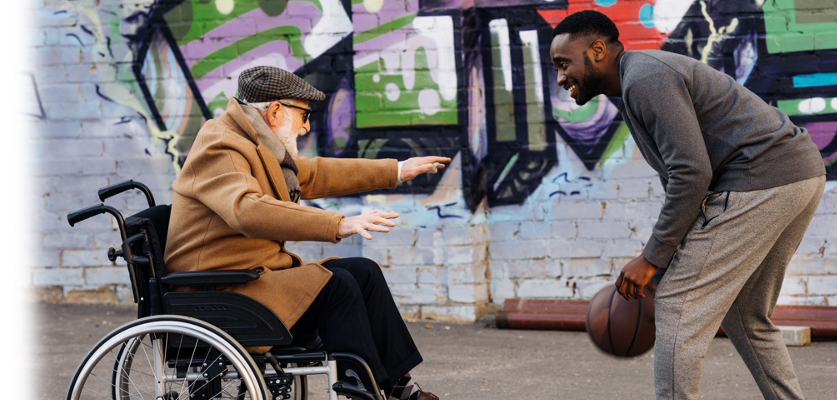Consider levels of physical activity and health preconditions
- It may be risky to start a programme with people who have not been physically active for more than a year.
- They should obtain approval and recommendations from a physician to assess whether some of these diseases exist: Arthritis, heart or circulatory disease, kidney disease, lung disease, osteoporosis, Alzheimer’s.
Understanding particular situations that may affect the elderly:
- Fluids: In advanced age, thirst is only a late sign of poor hydration and elderlies generally drink less than necessary. Aging skin tends to thin, increasing basic fluid loss beyond that caused by perspiration.
- Temperature: Advancing age increases sensitivity to both cold and heat.
- Urinary Incontinence: Male-aged participants require to go to the bathroom more often than participants from other ages due to prostate problems.
- Use of walking aid: Wheelchairs, walkers, rollators are often used by these groups. Sport facilities should include preferential access for this kind of device.
Physical activity routines performed properly and that do not cause injury
- Include exercises that focus on restoring strength, flexibility, and endurance that are lost with aging.
- Use slow and controlled movements to avoid muscle strain and bone fractures.
- Be aware of introducing enough time for conversation, reflection, observation and perception in programmes.
- Motivation for the elderly can also be increased by assigning them responsibilities.
- Older adults should also do muscle-strengthening activities at a moderate or greater intensity that involve all major muscle groups on 2 or more days a week, to achieve additional health benefits. (31)
Collaborating with senior homes and local associations
- Community networks already exist and take care of the elderly.
- Some already have specialists that may engage the elderly in physical activity.
- Others will welcome bridges with Sport clubs, coaches, and specialists that may bring new activities.
Other Tips
- Basic “Equipment” includes a comfortable dress that secures safe body temperature and proper footwear that prevents muscle strains and even bone fractures.
- Home-based programmes should be controlled.
- Measure physical results since physical fitness and quality of life are interrelated.
- Adapt accessibility to Sport facilities and other spaces such as toilets, drinking stations, etc.
- Consider professional guidance to ensure proper technique and safety when working with the elderly
- Do not start a programme without addressing age, gender and level constraints.
- Detect situations of overworking. Body expressions such as face colour and excessive sweating.
